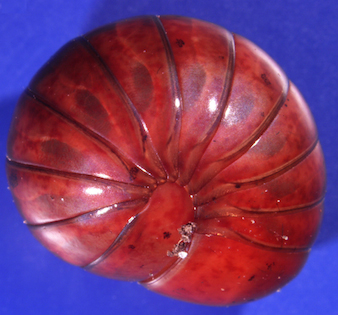The Millipedes of Madagascar
A mining operation is threatening the island's million-year-old species

On contemplating Madagascar, my mind naturally turns to millipedes. Well, millipedes and lemurs. The Texas-size island, located east of Africa, is home to 103 species of lemurs—the only place on Earth where these big-eyed, snouty-nosed primates are found—and 91 percent of these species are endangered, threatened or vulnerable, thanks to illegal logging and tropical forest destruction. According to one estimate, only 10 percent of Madagascar’s original forests now remain.
But millipedes are in trouble, as well, and Thomas Wesener of the Alexander Koenig Zoological Research Museum in Bonn, Germany, is striving to save them. Wesener, head of the museum’s section of Myriapoda—many-legged arthropods that include millipedes and centipedes—has now described nearly 100 new species of millipede from Madagascar. Conducted with colleagues at Chicago’s Field Museum and the American Museum of Natural History in New York, this is the first such comprehensive survey of Madagascar millipedes since 1902.
The team’s latest discoveries—seven new species of chirping giant pill-millipedes from the genus Sphaeromimus (Latin for “small ball animal”)—have just been published in the journal ZooKeys. In Madagascar, these arthropods are called Tainkintana, meaning “star droppings,” and some of them are found only in tiny rainforest fragments. One species, S. lavasoa, lives exclusively in a 100-hectare patch of rainforest on the Lavasoa Mountain—also home to a recently discovered, extremely rare species of dwarf lemur, Cheirogaleus lavasoensis, of which fewer than 50 individuals remain. Another millipede, Sphaeromimus titanus, is slightly larger than a ping-pong ball when rolled up.
When the team analyzed the DNA of the newly discovered millipedes, they found that the specimens are more closely related to Indian species than to African ones, and are, therefore, “living witnesses” to a period when Madagascar was connected to India. (The two split apart some 88 million years ago.) And their presence is crucial to local ecology: as Wesener told me via email, millipedes are important decomposers of leaf litter, which they eat and turn into humus that fertilizes plant growth. The littoral rainforests that they inhabit (closed canopy forests close to the ocean) grow mainly on sand, where no earthworms live, so millipedes are an important nutrient-recycling group.
Sadly, an enormous billion-dollar titanium-ore strip-mining project, run by QIT Minerals Madagascar (a daughter company of mining giant Rio Tinto), now threatens the survival of these shiny, bally creatures. “They basically flood the sandy area and use a machine to suck in the titanium-rich sand, filter it out, and pump it on a ship,” Wesener writes. “Unfortunately, the titanium deposits are directly under the last fragments of southern Malagasy littoral rainforests, one of the world’s most endangered ecosystems.”
QIT Minerals Madagascar, he adds, has paid for ecological analyses of these forest fragments, and plans to designate conservation zones and reforestations. Protecting even 10 percent of the forest can make a difference, because surviving organisms can repopulate the forest once it is replanted. But it is vital to conserve the “right” 10 percent, where plants and animals, like millipedes, are concentrated.
“These Sphaeromimus millipedes had thousands or even millions of years to perfectly adapt to the littoral forests there, the soil, the climate, the plants,” Wesener says. “They are a key organism. If you conserve the ‘wrong’ 10 percent, the endemic millipedes will be extinct. Irreplaceably. A forest can be replanted (hopefully), but the unique fauna which needed millions of years to evolve will be gone.”

